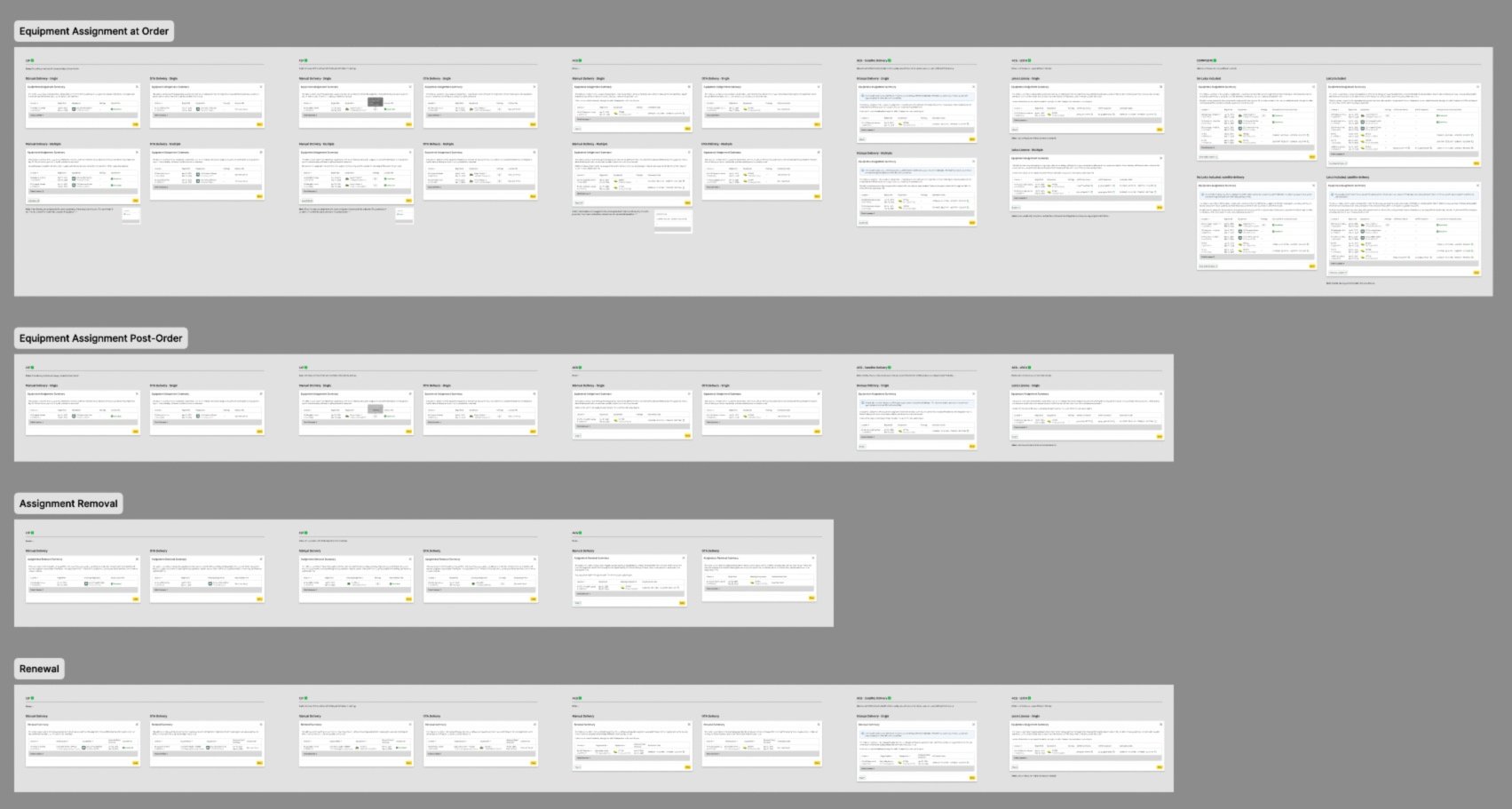
John Deere Licensing System
Timeframe June 2023 - Present
Role User Experience Designer
Contributions User Research | Usability Testing | Wireframing | Prototyping | High-Fidelity Design | Design System Alignment
John Deere leads the way in precision agriculture technology, and this technology is made available to its consumers through software licenses. Today, the sale of these licenses are made through dealers and then resold to the customer that use them. With this relationship, the dealer-customer connection is strong and results in dealers playing an integral role in managing licenses for the organizations they oversee.
This relationship is also key to the management of these software licenses. Beyond purchasing licenses, dealers also help their customers manage their licenses and execute key management actions like license transfers, renewals, cancellations, equipment assignment, etc. These actions are sometimes complex and technical, and until recently the management of licenses occurred through a third-party system.
Separate but partnering with Deere, this third-party system was known by dealers for its unintuitive design, laborious processes, and inconsistency with actual in-field implementation. Due to these pain points, Deere has created its own license management system in its Operations Center database, and allows dealers to perform these key actions more efficiently while making license information available to the user.
My role at Deere was to help develop this license management system as a user experience designer. Brought in early on, I was able to help form conceptual processes, optimize experiences, understand user needs through interviews and validation sessions, and align this new product with Deere branding standards.
How do we create a new licensing system that supports dealers, improves upon the existing external system, and anticipates our future users?
Discover
Existing System Analysis | Conceptual User Flows
Coming into the project, scope had been defined for our emerging product and initial user interviews with dealers had been conducted. Our team understood the primary pain points of our existing system, but also realized many of the management processes in the existing system would need to be maintained in Operations Center. Analysis of the existing system began to identify strategies to improve these processes, and from this analysis conceptual user flows for key actions were developed to target pain points.
Existing System Analysis
To understand the existing licensing management system, I reviewed the third-party platform to better understand how dealers were performing key actions for their customers. Following the processes and sequence of dealers helped identify opportunities for improvement alongside strengthening the on-board and off-board relationship of license management and utilization.
Conceptual User Flows
Once the fractured processes of the existing system were identified and understood, improved user flows of key management actions were developed to find solutions to make these processes faster and more intuitive. While the delivery of software licenses requires a rigid process due to security protections, actions such as ordering, assigning, and renewing licenses were identified as operations that could be improved upon.
Conceptual user flows for ordering, transferring, renewing, canceling, and assigning licenses.
Design
Optimized User Flows | Wireframes | Prototyping | User Validation
After understanding the existing system and mapping out conceptual process flows a user may take, these processes were reviewed with our product and development team to discuss how these could be executed in Operations Center. Identifying priorities and any possible development limitations, we refined our user flows and began sketching out conceptual designs via wireframes. These designs were then used as the blueprint for our prototypes used for user testing.
Optimized User Flows
Building off the conceptual user flows, I worked with product and development teams to understand what optimized user flows would look like given feature priority and phased development efforts. These flows were then used to conceptualize the finalized designs.
User flows for license delivery processes based on equipment type.
Wireframes
Wireframes were developed through quick sketches to visualize user flows through screens and to hypothesize the functionality of navigation and procession.
Prototyping
To guide user validation sessions with scenarios based in reality, prototypes were built to test out key actions that a user would be trying to complete in our licensing system.
User Validation
Based on feedback from user validation sessions, opportunities for continued improvement were identified. Mapping out positive feedback, pain points within our system, and additional considerations were important for refining our designs and guiding the final approach for development.
Validation session feedback.
Develop
High-Fidelity Designs | Design System Alignment
After receiving feedback from multiple rounds of validations sessions and refining process flows and designs, I transitioned into developing high-fidelity designs that would be used for the engineering teams to build. As these designs were being built out by our engineers, they were continuously improved or revised to accommodate technical limitations, possible pain point findings, etc. Working closely with both our writers and various engineering teams, these processes and designs evolved into built solutions to successfully provide users with experiences that allowed their operations to function.
High-Fidelity Designs
High fidelity designs were developed and organized for hand off to our development team. Files structured by processes and components were used so that developers could easily find which use case they were building for.
Design System Alignment
Alongside the development of high-fidelity designs, I ensured that our product aligned to Deere’s digital design system as much as possible. Beginning early on I identified inconsistencies with our in-progress design when compared to design system components. From there I have continuously used the design system as the guide for our designs to reinforce branding and maintain consistent experiences for our users.











